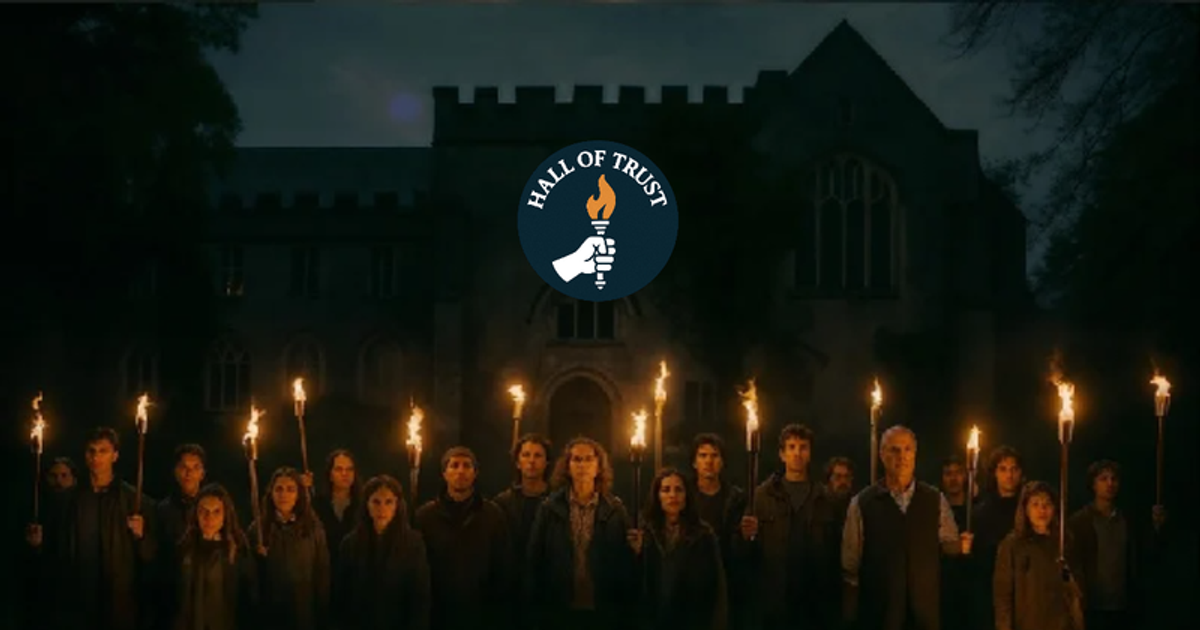When The Heart is Hollowed: Dartington and the Anatomy of a Quiet Takeover
Corruption doesn’t always carry a crowbar. More often, it carries a clipboard., and follows procedure. And the most effective kind? It plays the long game.

Dartington has always been more than a place. It’s an idea. A living experiment born from Dorothy and Leonard Elmhirst’s vision of land as a place for creativity, community, ecology, and learning. Generations have walked its paths and felt something rare—something rooted.
But now, that spirit is flickering. A 31 year old Forest garden is under threat. Schumacher College is closed. Artworks are sold off. Longstanding staff are gone. And all of it is explained away with one phrase:
“Financial crisis.”
But what if that crisis wasn’t just bad luck or mismanagement? What if Dartington was deliberately placed into jeopardy?
Let’s explore the theory—and the evidence that supports it.
A Long Game of Extraction
Corruption doesn’t always carry a crowbar. More often, it carries a clipboard, and follows procedure. And the most effective kind? It plays the long game.
What if Dartington’s financial trouble wasn’t accidental? What if it was engineered—slowly and quietly—over years?
Here’s how such a scheme could unfold:
1. Siphon Value Quietly
Trusted insiders approve inflated payments to handpicked contractors.
These companies may be fronts or linked to insiders.
Work is often vague, overpriced, or repetitive.
Nobody notices, because the reporting categories—“consultancy,” “professional services”—sound completely legitimate.
Result: Money leaves the estate in drips—but over years, it bleeds the place dry.
To former Dartington staff and those who were close to the inner workings—if you saw things that didn’t sit right, that raised questions or felt hidden, now is the time to speak. Your insight could shine a light on what’s been buried. Reach out to us in confidence through our website.
2. Avoid Transparency
Delay filings to the Charity Commission.
Obfuscate financial data under generic labels.
Ignore calls for oversight.
Result: The public sees a sinking ship, but not why it's sinking.
3. Demoralize and Displace
Close iconic programs like Schumacher College.
Serve eviction notices to respected community tenants like Martin Crawford.
Push out long-standing staff or those who question what’s happening.
Label concerned locals as “sentimental,” “resistant to change,” or even “conspiratorial.”
Result: Silence and fatigue replace resistance. People feel powerless.
4. Enter the ‘Clean-Up Crew’
Right on cue, new leadership arrives:
Lord David Triesman (a former Labour politician with deep establishment connections) is appointed Chair.
Robert Fedder, a corporate turnaround specialist, is given full executive powers to restructure everything.
They come with a mission: “Save Dartington.”
But what does that really mean?
It seems to mean:
Selling off non-core assets
Cancelling community-centered activities
Focusing on financial recovery at the cost of legacy
Ask yourself: If this was truly about saving Dartington’s spirit, why is it the spirit that’s being dismantled?
5. Rebuild in a New Image
The final step is to rebrand. A clean slate. Dartington becomes:
A hub for investors
A retreat for the middle-class
A corporate-friendly model of “sustainability” with none of the soul
The Elmhirsts' vision is reduced to a bullet point in a brochure.
The Smoking Signals
This isn’t just theory—it’s aligned with real, public events:
£13.85 million in income in 2023, yet a £4.5 million deficit
Staff testimony about "eye-watering" consultant payments
Community protests over evictions and closures
Delayed financial reporting resulting in a government fine
Board reshuffles that removed oversight and embedded new, distant power
And all the while, the public has been told to trust the process.
Behind the Curtain of Crisis: A Familiar Script
This has all the signs of a well-rehearsed playbook—one we’ve seen used time and again across the country. Create financial confusion, delay transparency, claim insolvency, then bring in outside “experts” to restructure what was once thriving. What follows is almost always the same: asset sales, cultural erasure, and a glossy rebrand aimed at the affluent.
So What Can We Do?
We can start by seeing this for what it is—not a one-off crisis, but part of a larger pattern. The same quiet strategy has been rolled out in towns, trusts, and cultural institutions across the country. The language is familiar: “revitalisation,” “efficiency,” “future-proofing.” But behind the scenes, it’s about control—removing the soul of a place and selling it back, polished and hollow.
Introducing the Hall of Trust Initiative No more petitions. No more polite protests. It’s time to play them at their own game. We're commissioning a top-tier forensic accounting team to investigate the Dartington Hall Trust from the inside out—because truth leaves a paper trail. If they’ve buried the legacy under consultancy fees, backdoor deals, or strategic silence… we’ll find it. This isn’t about noise—it’s about precision. We go straight to the heart. Support. Share. And if you know something, speak.







